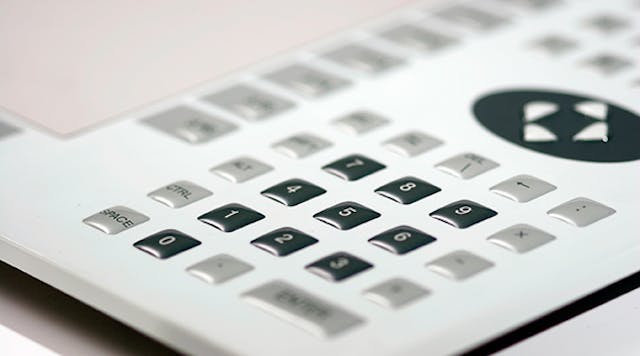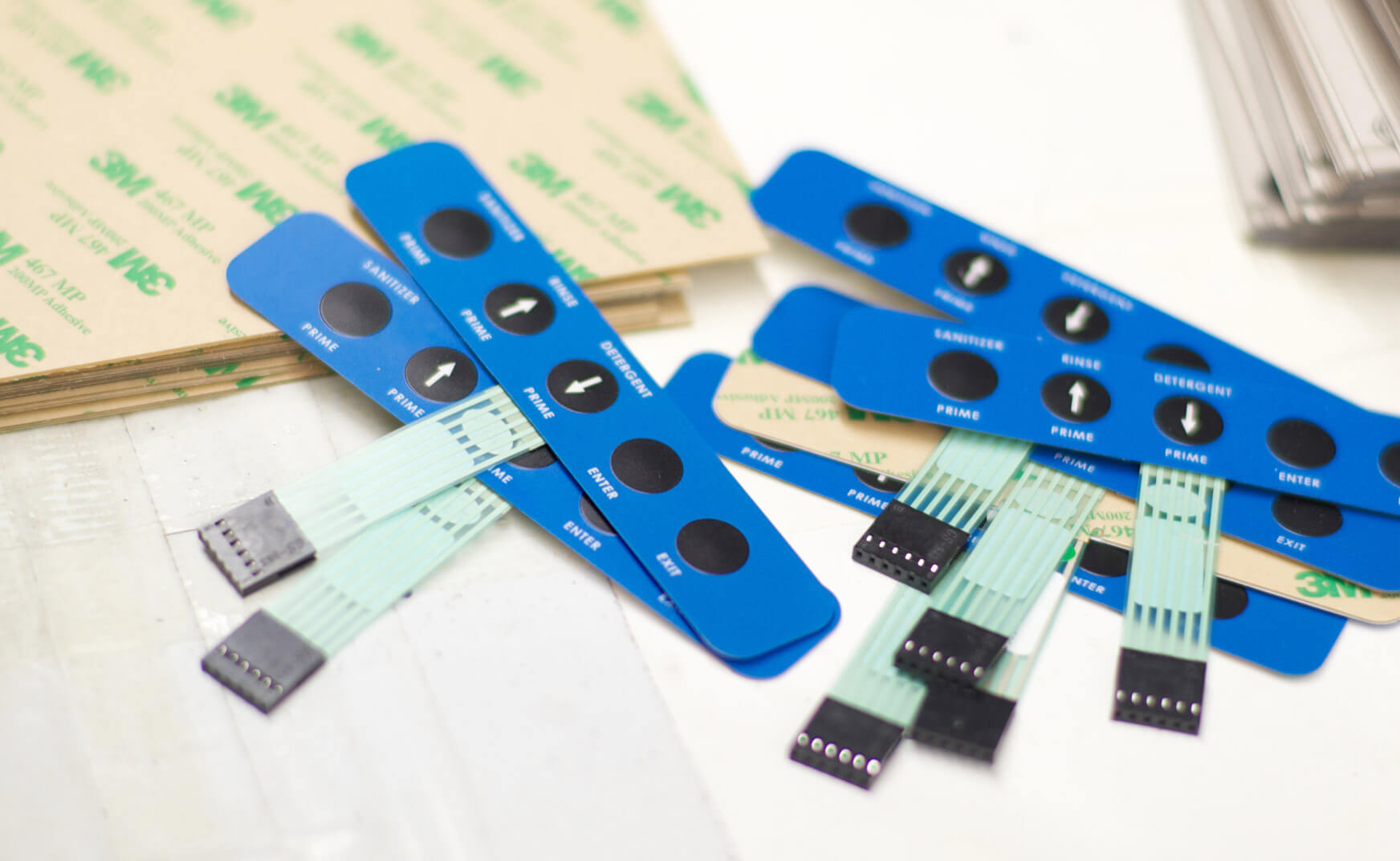How Membrane Switches Are Revolutionizing User Interface Design
How Membrane Switches Are Revolutionizing User Interface Design
Blog Article
Recognizing the Importance of Membrane Switches in Interface
Membrane switches are indispensable parts in the design of effective interface, facilitating not just functionality yet also improving aesthetic appeal and individual communication. Their special functions, such as resistance to adjustable layouts and environmental variables, make them appropriate for a diverse variety of applications throughout several sectors. As we explore the future fads and different advantages related to Membrane technology, it ends up being clear that these buttons are greater than simply components; they represent a convergence of technology and practicality. The implications of this innovation on user experience deserve analyzing better.
What Are Membrane Switches?

The spacer layer, which has glue properties, permits the splitting up of the circuit layer from the overlay, making certain that the button continues to be in a non-activated state until pressed. When stress is related to the overlay, it compresses the spacer layer, connecting the gap and finishing the circuit in the underlying layer. This design not just minimizes the physical space required for standard mechanical buttons but also boosts the sturdiness of the tool, as Membrane buttons are usually immune to dirt, dampness, and various other environmental variables.
Frequently found in applications varying from consumer electronics to medical devices, Membrane buttons are integral to modern-day innovation, supplying a efficient and straightforward user interface that lines up with contemporary layout requirements.
Advantages of Membrane Switches
While various button modern technologies exist, Membrane Switches offer distinct advantages that make them specifically desirable in numerous applications. One of the primary benefits of Membrane buttons is their small layout, which enables for space-saving executions in tools where property is restricted. Their thin account not just enhances aesthetic charm however additionally facilitates light-weight building.
An additional substantial advantage is their resistance to ecological elements. Membrane buttons are normally sealed versus moisture, dust, and impurities, making them optimal for use in requiring atmospheres, such as medical devices and industrial tools. This durability extends the life-span of the button, lowering maintenance costs and boosting integrity.
Furthermore, Membrane switches can be customized to satisfy specific layout needs, including one-of-a-kind graphics and shades that improve customer interaction. Their tactile feedback options can additionally be tailored to give a gratifying user experience. Furthermore, Membrane buttons are economical, specifically in high-volume applications, as they can be produced successfully.
Applications in Various Industries

In the consumer electronic devices field, Membrane switches prevail in tools such as microwaves, washing machines, and remotes. Their tactile feedback and visual alternatives improve individual experience while giving a streamlined, modern appearance. Furthermore, automobile manufacturers make use of Membrane switches in dashboard controls and infotainment systems, where room is limited, and customer engagement is important.
Moreover, the commercial market leverages Membrane switches in control panels for equipment and devices, enabling intuitive procedure in frequently rough atmospheres. Their resistance to chemicals and wetness makes certain longevity and dependability in these applications. Overall, the versatility of Membrane Switches adds significantly to their widespread use, making them indispensable in numerous technical domains.
Layout Considerations for Membrane Switches

When developing Membrane buttons, numerous key factors to consider must be taken into consideration to guarantee optimum functionality and individual experience. To start with, the choice of products is essential; choosing resilient, high-quality substrates can boost the button's durability and resistance to ecological factors such as wetness go to this web-site and temperature changes.
Second of all, the layout of the visuals overlay ought to prioritize clearness and convenience of usage. Icons and message must be legible, and the layout ought to facilitate user-friendly communication (membrane switches). Furthermore, responsive responses is necessary; incorporating a responsive dome or other mechanisms can enhance the customer experience by supplying physical verification of activation
Another vital variable is the button's electric efficiency. Designers need to ensure that the conductive traces are appropriately created to lessen resistance and avoid signal disturbance. This entails analyzing the needed actuation pressure and making sure compatibility with the digital parts they will certainly interface with.

Future Fads in Membrane Modern Technology
As innovation remains to breakthrough, Membrane buttons are poised to advance substantially, driven by innovations in products and producing techniques. One arising pattern is the consolidation of advanced products, such as adaptable substrates and conductive inks, which enhance sturdiness and decrease the overall weight of Membrane switches. These products not only boost the tactile action yet additionally enable the layout of buttons that can endure harsher ecological conditions.
Additionally, the combination of touch-sensitive technologies is transforming traditional Membrane Switches into more interactive interface. Capacitive touch sensors installed within Membrane switch panels can provide an extra intuitive and receptive user experience, straightening with the expanding need for streamlined, modern-day styles in consumer electronic devices.
Additionally, developments in printing techniques, such as digital and 3D printing, enable fast prototyping and customization of Membrane buttons. This flexibility enables makers to respond quicker to market demands and consumer choices.
Finally, sustainability is ending up being a substantial emphasis, with producers exploring environment-friendly products and processes. As these patterns unfold, the future of Membrane technology assures boosted capability, aesthetic charm, and environmental duty, strengthening their duty in advanced interface throughout numerous sectors.
Conclusion
To conclude, Membrane Switches represent an important component in the layout of interface, combining performance with aesthetic adaptability. Their benefits, including durability and resistance to environmental factors, make them appropriate for diverse applications throughout numerous industries. Furthermore, thoughtful design factors to consider enhance customer interaction and experience. As developments in technology proceed, the advancement of Membrane buttons is expected to further improve user interfaces, driving technology and improving use click to read more in a significantly complicated technical landscape.
Membrane buttons are integral elements in the layout of efficient my company user interfaces, assisting in not just performance but also boosting aesthetic allure and customer communication.Membrane Switches serve as a vital part in different individual interfaces, facilitating a smooth interaction between individuals and electronic gadgets.While various switch innovations exist, Membrane Switches deal unique advantages that make them especially desirable in different applications.In addition, Membrane buttons can be personalized to meet certain layout demands, including one-of-a-kind graphics and shades that boost user communication.In final thought, Membrane Switches stand for an essential component in the design of user interfaces, combining functionality with visual versatility.
Report this page